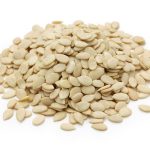Alternative splicing is a key process in eukaryotic gene expression, allowing a single gene to produce multiple protein isoforms. This process occurs during the maturation of pre-mRNA, where different combinations of exons are joined together, and introns are removed, generating mRNA variants that can code for distinct proteins or protein isoforms. This contributes significantly to the complexity and diversity of the proteome without the need to increase the number of genes.
Here is a detailed description of the different types of alternative splicing:
1. Exon Skipping (Cassette Exon)
- Definition: Exon skipping is the most common form of alternative splicing. In this case, a specific exon is either included or excluded from the final mRNA. When skipped, the neighboring exons are directly connected, omitting the skipped exon in the mature mRNA.
- Example: Suppose there is a gene with exons A, B, C, and D. Exon B could be skipped, resulting in the mRNA sequence A-C-D instead of A-B-C-D.
- Mechanism: The inclusion or exclusion of a particular exon is controlled by sequences called splicing enhancers and silencers located within the exon or surrounding intronic regions. These sequences recruit various splicing factors (such as SR proteins and hnRNPs) that either promote or inhibit the splicing of that exon.
2. Alternative 5′ Splice Site Selection
- Definition: In alternative 5′ splice site selection, an alternative splice site within an exon or adjacent intronic region is selected at the 5′ end of the intron. This leads to the inclusion of a different portion of the exon or a shift in the exon boundaries.
- Example: A gene might have two possible 5′ splice sites within an exon, resulting in a variant mRNA where the first portion of the exon is spliced with the previous exon in one isoform and a different portion is included in another isoform.
- Mechanism: This type of splicing is regulated by specific RNA sequences and splicing factors that determine which 5′ splice site will be recognized by the spliceosome.
3. Alternative 3′ Splice Site Selection
- Definition: Similar to alternative 5′ splice site selection, alternative 3′ splice site selection involves the use of a different 3′ splice site in an exon or its flanking intronic region. This can change the portion of the exon that is included or excluded from the final mRNA.
- Example: If a gene has multiple 3′ splice sites, one isoform of mRNA may include a longer segment of an exon, while another isoform includes a shorter version of the same exon.
- Mechanism: This process is regulated by the recognition of specific 3′ splice sites by the spliceosome, and like 5′ splice site selection, it is influenced by splicing factors and the RNA sequence at the splice site.
4. Intron Retention
- Definition: In intron retention, an intron that would normally be spliced out remains in the mature mRNA. This can lead to the production of non-functional protein isoforms or regulatory roles for the retained introns.
- Example: If an intron is retained in the mRNA, the resultant transcript may carry a premature stop codon, or the retained intron could encode a functional RNA product with a regulatory role.
- Mechanism: Intron retention can occur when the spliceosome fails to recognize the 5′ and 3′ splice sites correctly, or when splicing factors prevent the recognition of these sites, resulting in retention of the intron.
5. Mutually Exclusive Exons
- Definition: In mutually exclusive exon splicing, two or more exons are adjacent to one another, and only one of them is included in the final mRNA. The choice between exons is mutually exclusive, meaning the presence of one exon excludes the other.
- Example: A gene with exons A, B, and C could generate two distinct mRNA isoforms: one with exons A and B, and another with exons A and C. The exons B and C are never present together in the same isoform.
- Mechanism: This form of alternative splicing is controlled by specific RNA sequences and regulatory proteins that ensure that only one exon is included at a time.
6. Alternative Polyadenylation
- Definition: Alternative polyadenylation involves the use of alternative polyadenylation signals at the 3′ end of a transcript, resulting in mRNA isoforms that differ in their 3′ untranslated regions (UTRs). This can affect the stability, localization, and translation of the mRNA.
- Example: A gene may have two alternative polyadenylation signals, one that produces a long 3′ UTR and another that produces a shorter 3′ UTR, altering the stability or regulation of the mRNA.
- Mechanism: The selection of a polyadenylation signal is regulated by cleavage and polyadenylation specificity factors (CPSF), symplekin, and other factors that bind to the poly(A) signal sequences.
7. Alternative Splicing in the Context of RNA Editing
- Definition: RNA editing, particularly adenosine-to-inosine editing, can affect splicing by altering the sequence of the pre-mRNA. This can create new splice sites or modify existing ones, leading to alternative splicing events.
- Example: A splice site could be altered by RNA editing such that it is no longer recognized by the spliceosome, or a new splice site may be created, producing a different mRNA isoform.
- Mechanism: RNA editing is carried out by ADAR (adenosine deaminases acting on RNA) enzymes, which convert adenosine residues to inosine in RNA, thereby changing the sequence and splicing behavior of the mRNA.
8. Exonization of Intronic Sequences
- Definition: Exonization refers to the process by which sequences that were originally part of an intron are incorporated into the final mRNA as exons. This can create new coding sequences or regulatory elements.
- Example: An intronic region could gain a splicing signal and be included in the final mRNA, forming a new exon that encodes a functional protein domain or a regulatory motif.
- Mechanism: The exonization of an intron is typically triggered by mutations that create new splice sites in the intron, along with the recruitment of splicing factors that favour the inclusion of these sequences in the final mRNA.
Alternative splicing is a versatile mechanism that significantly increases the diversity of the transcriptome and proteome. By utilizing different combinations of exons and varying splice site choices, cells can produce multiple mRNA variants from a single gene. This process is tightly regulated by the spliceosome, RNA-binding proteins, and splicing enhancers/silencers, which ensure proper splicing outcomes. Misregulation of alternative splicing is often associated with diseases like cancer, neurodegenerative disorders, and muscular dystrophy, underscoring the importance of maintaining splicing fidelity.



Leave a Reply